
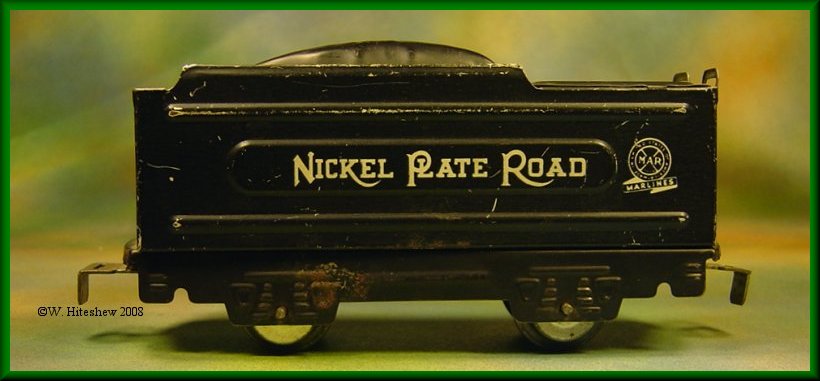
The Nickel Plate Road wedge tender is another one that is quite difficult to find.
Again, it is shown in the Rare Sets section. At least two sets have been found with this tender. One has two seven-inch Merchandise
Service boxcars and one Wabash gondola. The other has two boxcars and two gondolas. The two sets have not yet been examined side by
side to determine if there are other subtle differences.
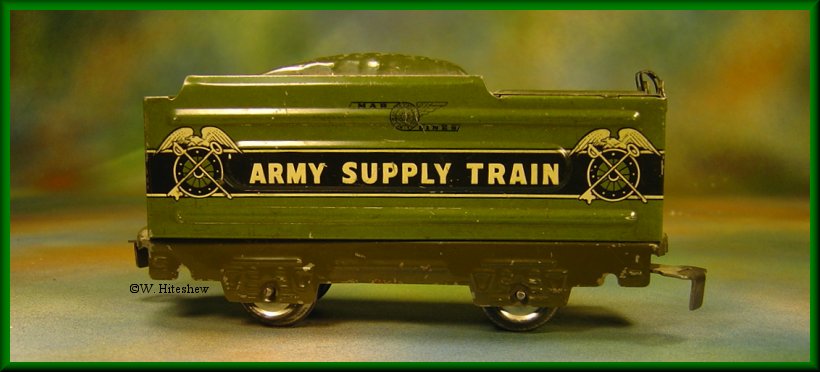
Here we have the elusive Army Supply Train wedge tender. These are from about 1940 and were sold with the Olive Drab 897 litho engine.
This particular example was with a clockwork army set shown in the Rare Sets section of this website.
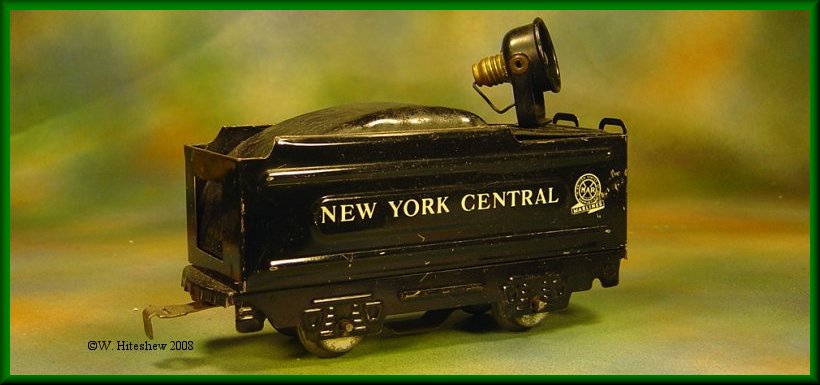
This lighted, 4 wheel, wedge tender is one that doesn't turn up too often. These are separate sale items not included in sets.
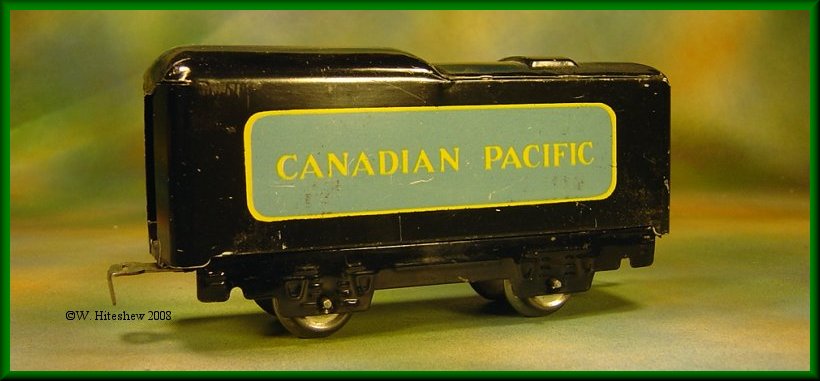
This four wheel Canadian Pacific tender with the blue and yellow sideboards is difficult to find. This is often overlooked
because the eight wheel version is somewhat plentiful. I didn't tealize how few of these were around until I published
The DEFINITIVE Guide to Marx Trains, Joy Line and Six-Inch Tin.
During the research phase of the CD I built a huge database of every six-inch car I knew, assumed, or thought might exist. I then
spent over two years combing through some of the finest Marx collections in the world and discussing what wasn't showing up with
some of the most knowledgable and well respected collectors. Many myths, presumptions, and mistakes were exposed. This car turned
up at the last minute. These are more rare than most collectors know!
I released my Marx Guide in 2005. More than 1000 copies have been sold, many to very knowledgable Marx collectors. To date (2/2008)
no substantive mistakes have been reported (spelling and grammer only). Only two minor variations have surfaced that were not on the
original release, they are now included. If you don't own a copy of The DEFINITIVE Guide to Marx trains, Joy Line and Six-Inch Tin
you are collecting in the dark or with incorrect information. Do yourself a favor. Don't buy a twenty year old book with too many
mistakes, omissions, and fakes included. Buy my CD instead. You will not be disappointed.
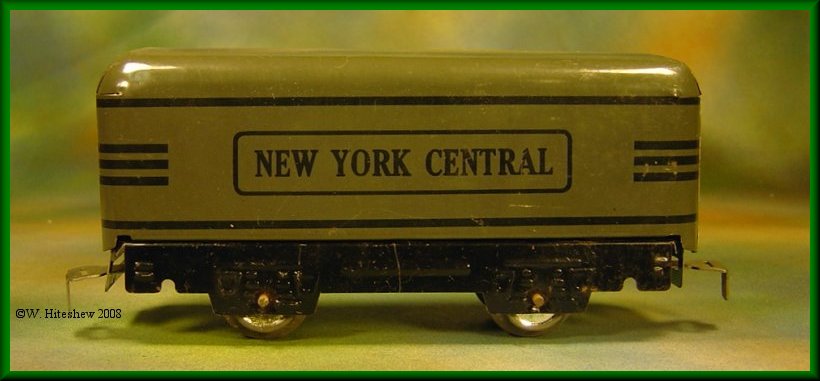
The NYC grey stripe litho tender is probably the scarcest 6" coffin tender. This one
turned up in a clockwork set with a grey Commodore Vanderbilt in a clockwork set shown
in the Rare Sets section of this website.
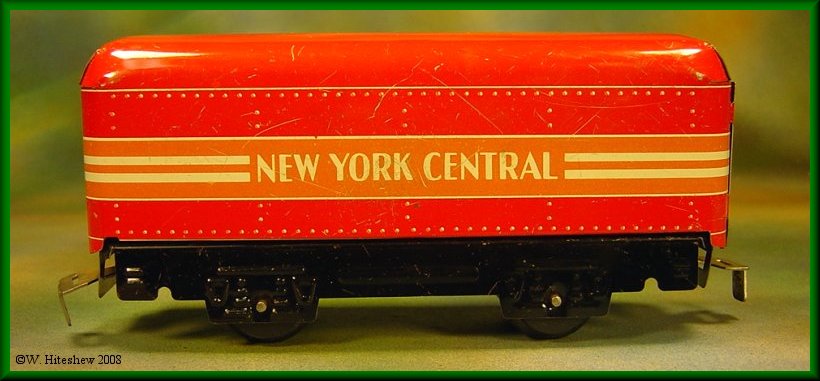
The NYC Orange Band litho tender is a pretty rare bird. I found this one in an inexpensive
battery operated set also shown in the Rare Sets section. For years it was believed these were clockwork only but since 2000 at
least two electric sets have also turned up. The consist of the electric set is if=dentical to the clockwork set except the
cars have plastic knuckel couplers (PKC).
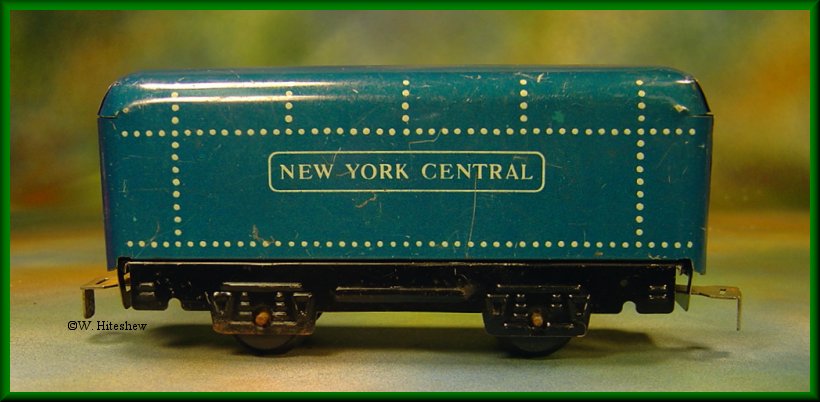
This late tender is quite hard to find in any condition. This is another one that is hard to explain. Why the dark blue base
color? It is shown with it's set in the Rare Sets section of this website.
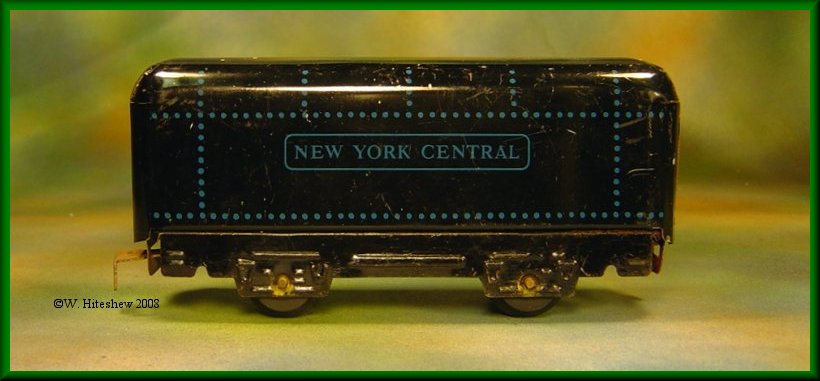
Here we have one of the oddest Marx six-inch tenders. Yes, the rivets and NYC Herald are blue! These are rare and curious at the same time. Why were these done? What set
are they from? Is it a mistaken litho run that was formed before anyone noticed? These are all questions that might never be
answered.Do you have one of these in a boxed set? If you do please let me know.
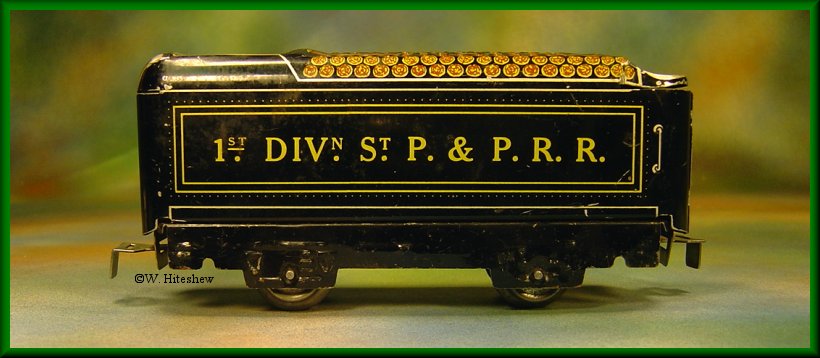
This 6" tender for the William Crooks clockwork passenger set is also difficult to find. In my
opinion it's the best looking Marx 6" tender. These are found with either punched sliding tab and slot (PSTSC) or plastic knuckle coupler (PKC). This has made me wonder whether an electric four wheeled William Crooks Passenger set was produced or if some of
the four wheel clockwork sets were fitted with PKC. The clockwork William
Crooks set can be seen in the Seven-Inch section of this site.
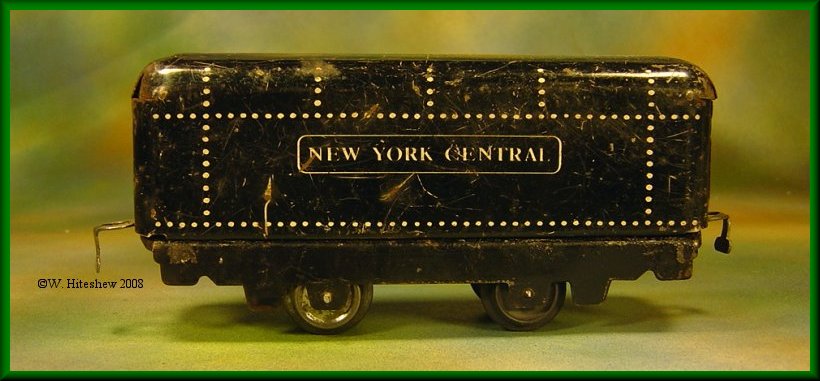
This Early six inch tender is unusual because it has the short wheelbase frame without the
silver litho. The body litho is rather poor as the early six inch tended to be. This one has
Joy Line couplers but it can also be found with tab and slot couplers. Cliff Carlson and I have speculated as to the why and
wherefore of these frames but have yet to arrive at any satisfactory answers. Too many are found to exclude them as mistakes
or oddities. If you can surmise a good reason why these exist I'd like to here the theory. These frames often appear to have been
repainted poorly.
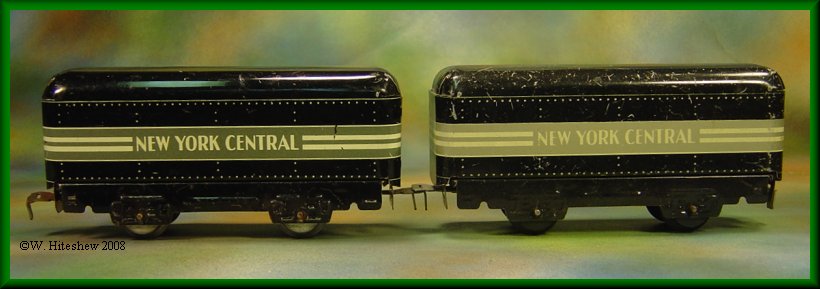
These tenders are not rare but many collectors are unaware of the variations. Most black band litho tenders are detailed with silver and
white (right) but there are some done in gray and white (left). I had collected Marx for many years before I discovered this variation. I
am not sure just how rare the gray version is.
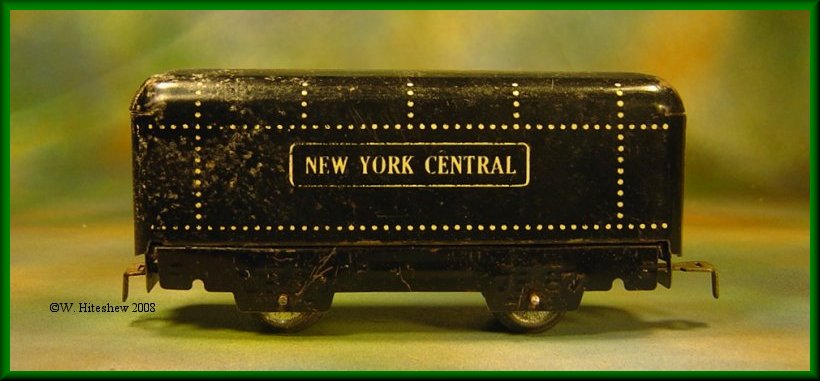
This tender is not really rare but one that is hard to find and often overlooked by collectors. It appears to be a common rivet
litho tender but see the picture below. It has the Marx logo on one end.
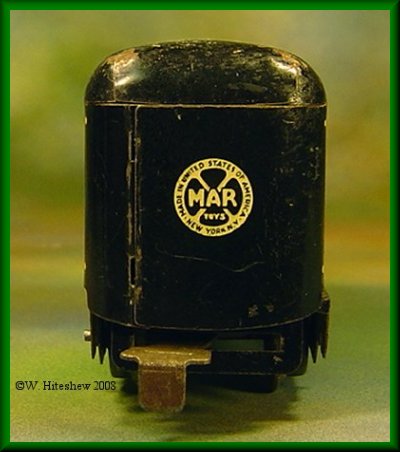
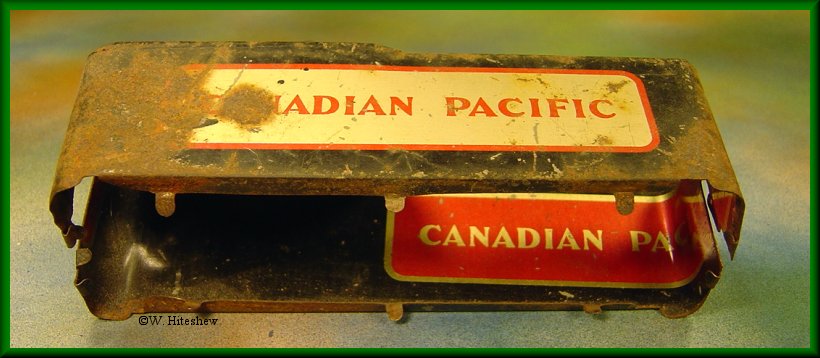
I found this tender body years ago in a junk box. The interior is very interesting in that it has reversed litho colors. I am interested
whether anyone has one of these that was formed with the reversed colors outside. How 'bout you. Got one?















